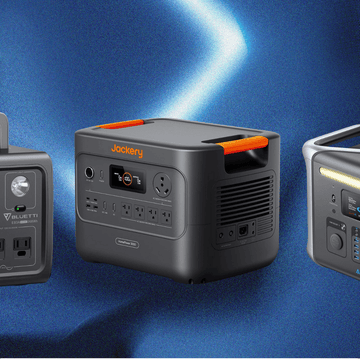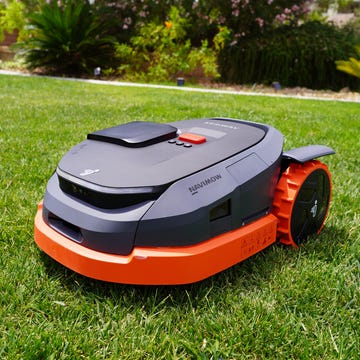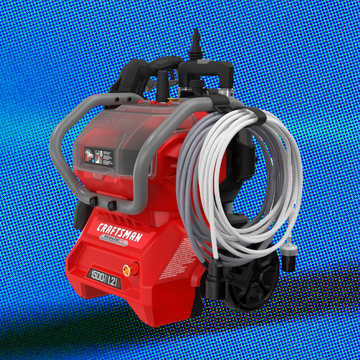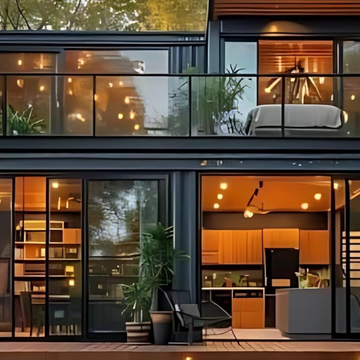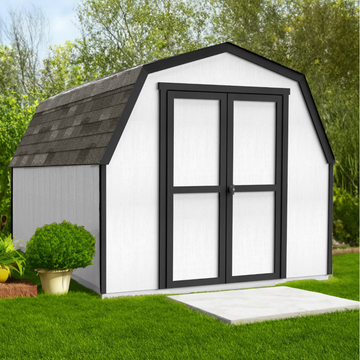Rome wasn't built in a day and neither is a lush garden, but there are certain plants that can bear fruit in as little as two months. Depending on the fruit, you don't even need a whole lot of space. As long as you have a sunny part of your backyard, patio, deck or porch, you can plant fruits like strawberries and blackberries in small containers. With the right amount of watering and care, you'll have a mini farmer's market right outside your door before you know it. Ahead, discover the best fast-growing fruits that can grow in small containers.
Strawberries
Strawberries have shallow roots, so they can flourish in small containers. "Plant the 'crown' (where the leaves meet the roots) just above the soil line to prevent rot, and ensure they get at least six to eight hours of full sun daily," says gardening pro Dagny Kream. Be sure to regularly water this fruit to keep the roots moist. All in all, strawberries are a great option for beginners looking to plant a fast-growing fruit. You'll be ready to make strawberry jam before you know it.
- Fruit growing time: 2–3 months from seeds or 2–4 weeks from a transplant
- USDA zones: 4–9
- Container type: Wide and shallow; ideally with at least a 12-inch diameter and 6-inch depth or 1–2 gallons per plant
- Sun exposure: Full sun
- Soil: well-draining, moist and rich
Gooseberries
Fans of tart, mildly sweet and a bit sour fruits will love gooseberries (plus, they're great for pies and cakes). "[Gooseberries] are fast-growing plants that can thrive in containers but benefit from staking and pruning to keep them compact and productive," says Brian Brigantti, founder of Red Leaf Ranch and author of Gardening for Abundance. Keep the container in full sunlight to partial shade with well-draining soil. Brigantti recommends using a medium to large pot and suggests pruning the plant regularly "to encourage upright growth and abundant harvests."
- Fruit growing time: 2 – 3 years from seeds and one year from a transplant
- USDA zones: 3–8
- Container type: Medium to large pot
- Sun exposure: Full to partial sunlight
- Soil: Well-draining, slightly acidic (pH 6–6.5) soil with organic matter
Dwarf blueberries
Dwarf blueberries are an even tinier version of the already tiny fruit, but they're just as sweet and delicious. They grow as a compact bush that fits into small containers and spaces and they take just a few months to begin bearing fruit. For the best results, Kream suggests using a potting mix specifically designed for acid-loving plants and keeping a second blueberry bush nearby. "Plant at least two different varieties for better cross-pollination and a more abundant harvest," says Kream.
- Fruit growing time: 5 to 6 months from seeds or at least 10 weeks from a transplant
- USDA zones: 3–7
- Container type: Well-draining, large container (some dwarf blueberry bushes can grow up to 2 feet tall and 3 feet wide)
- Sun exposure: Full sun
- Soil: Well-draining, rich, acidic soil (pH 4.5–5.5)
Meyer Lemon Trees
Nothing beats a glass of homemade lemonade — and you can take it one step further by growing your own lemons, too. Meyer lemon trees produce fruit quicker than other lemon trees and fit in a container (albeit not the smallest container, but small enough to fit on a patio). It's low-maintenance for a tree.
If the tree is in a small pot, you only need to water these trees every two to three days, or when the soil begins to dry out. "To check if your plant needs water, insert your finger 1–2 inches into the soil and if it feels dry, water thoroughly," says gardening pro and content creator Carmen Perr. She also suggests amending the soil with compost at least twice a year.
- Fruit growing time: 6 months to 2 years from a transplant and 3–7 years from a seed
- USDA zones: 8–11
- Container type: A well-draining, 15-gallon container
- Sun exposure: Full sun (at least six hours of sunlight per day)
- Soil: Well-draining, slightly acidic soil (pH of 5.5 to 6.5) or a premixed soil for citrus trees
RELATED: How to Grow a Lemon Tree
Ground cherries
Ground cherries appear vastly different than your traditional cherry. "Ground cherries are small golden fruits that look like tiny tomatoes wrapped in papery husks with a sweet-tart flavor," explains Kream, who also says they "are very prolific and easy to grow." Ground cherries need well-draining soil and full sunlight, but they can thrive in a variety of climates and are relatively easy to grow. "They are relatively low-maintenance but can benefit from a tomato cage or support ring to keep branches from sprawling," Kream says. In as little as two months, you can harvest these fruits and enjoy the mildly tropical flavor.
- Fruit growing time: 2–3 months from seeds and around 2 months from transplants
- USDA zones: 4–8
- Container type: 5–7 gallon pot
- Sun exposure: Full sun
- Soil: Well-draining soil
Dwarf blackberries
Who doesn't love a blackberry tart? Brigantti says you can grow blackberries in containers, but he specifically recommends more compact or dwarf varieties. Consider Baby Cakes or Little Black Prince blackberry varieties. Brigantti says dwarf blackberry plants are easy to maintain and while they thrive in full sun, they can still grow in partial shade. "This is a great choice for balconies or patios if someone doesn't have access to a spot with lots of direct sunlight," he says. For a faster growing time, consider starting with a smaller plant rather than from seeds (two years sounds like a long time, but in the grand scheme of things, this is fast for growing fruit!).
- Fruit growing time: Five to six years from seeds or two to three from a transplant
- USDA zones: 5–9
- Container type: 1 gallon pot
- Sun exposure: Full sun to partial shade
- Soil: Well-draining, loose, slightly acidic (pH 5.5–6.5) soil
Honeyberries
If you live in a colder climate, honeyberries may be your new best friend. They are cold-tolerant and thrive in USDA zones two to eight. Kream says they're one of the earliest fruits to ripen and they "aren't as fussy about soil pH as blueberries" or soil types. For small containers, choose a compact variety like Blue Moon or Blue Velvet. "While you can start with a three-gallon pot, honeyberries are long-lived and will eventually need larger containers," explains Kream, who recommends transferring the plant to at least a 15- to 20-gallon pot for when it matures.
- Fruit growing time: 3–5 years from seeds and 1–2 years from transplant
- USDA zones: 2–8
- Container type: 3-gallon pot to start and then increase to 15–20 gallons
- Sun exposure: Full sun to partial sun
- Soil: A variety of well-draining soil, but ideally a loose, slightly acidic or neutral soil (pH 5–7.5)
Meet the experts
✔️ Brian Brigantti is the founder of Red Leaf Ranch and author of Gardening for Abundance.
✔️ Dagny Kream is a gardening expert and content creator
✔️ Carmen Perr is a gardening expert and content creator
Isabella (she/her) covers commerce and product-related content in the home, lifestyle, fitness, technology and beauty. She graduated from Binghamton University in 2022 with a bachelor’s degree in English: Literature & Rhetoric. Before joining GH, she was an editorial assistant at Prevention, where she covered health topics and celebrity news.











